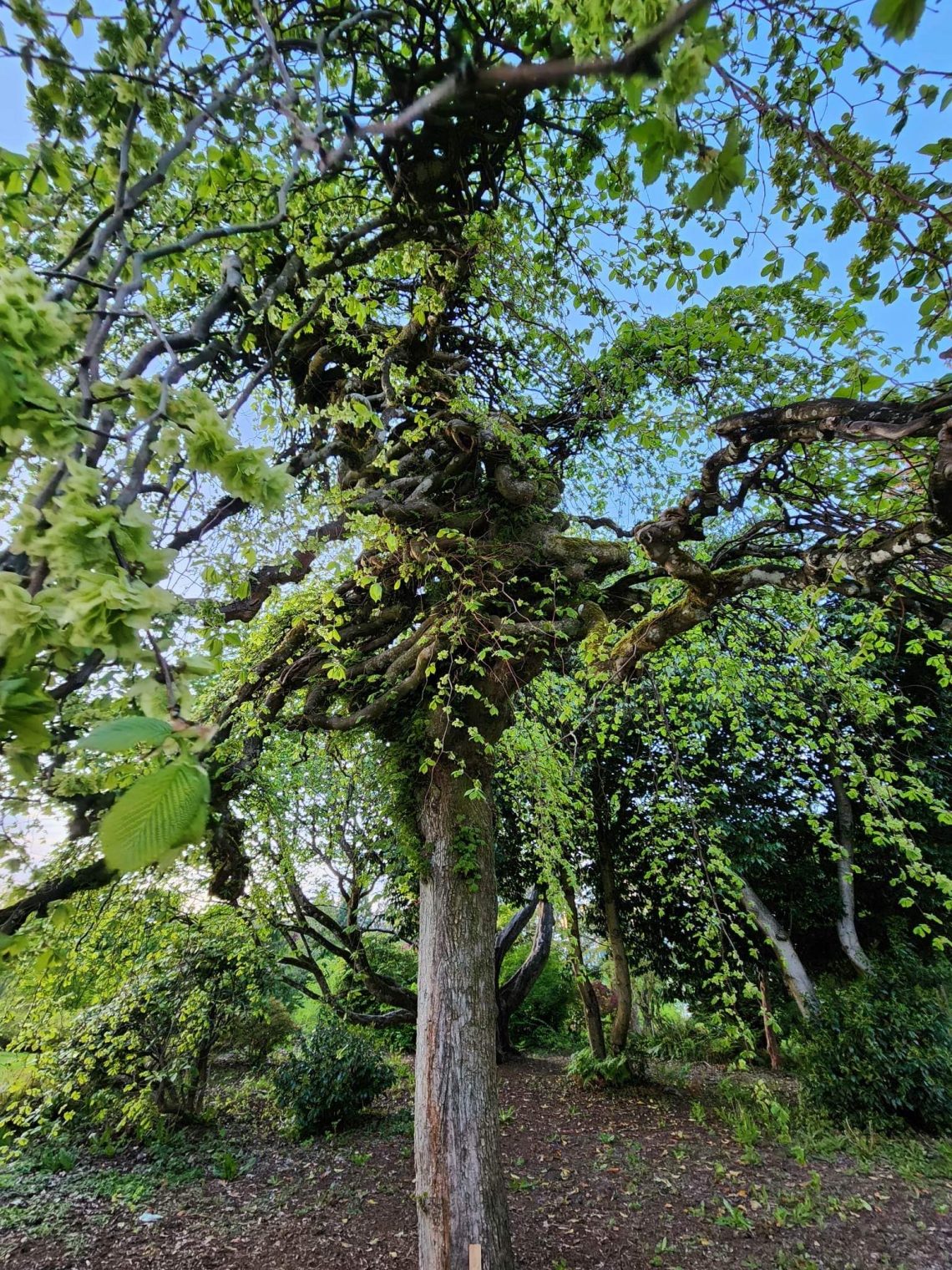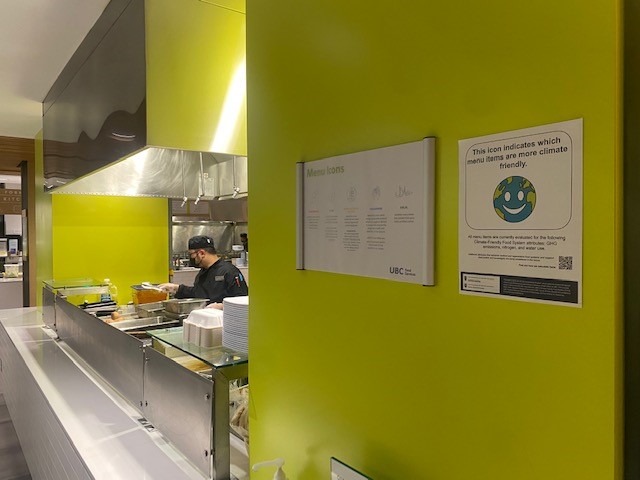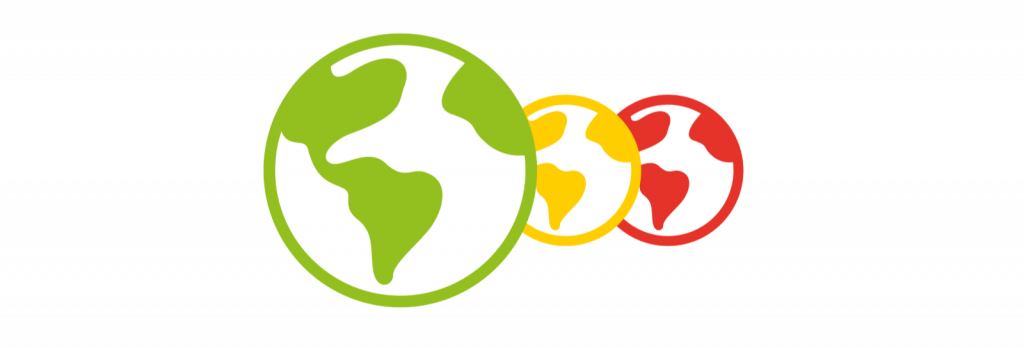Along Main Mall, within building courtyards, and everywhere in between, trees play an important part in providing essential ecosystem services, such as carbon sequestration and mitigating the urban heat island effect.
In order to conduct meaningful research and analysis of trees on campus, baseline data neeeds to be collected and available to researchers and planners. This includes information such as:
- How many trees are on campus?
- What species of trees are on campus?
- Where are trees distributed around campus?
- What are some metrics associated with each tree, such as their height?
Enter: the Tree Inventory Research Project!
Tree Inventory Basics
“A tree inventory refers to a systematic process of gathering information on various attributes of trees including tree species, health, location, size and ecosystem services.”
Tree Inventory Toolkit
The UBC Vancouver tree inventory is an ongoing student-led collaboration which started in 2018 and is estimated to finish in August 2025. In partnership with the SEEDS Sustainability Program, Campus and Community Planning, and UFOR 220 (Urban Forest Inventory and Assessment) faculty, students are assigned specific plots located within different campus zones and are given the opportunity to gain experience contributing to the campus tree inventory.
The current tree inventory has 8 Phases (Figure 1), and as of May 2023, Phases 1 through 5, which cover the core academic campus are nearly complete.
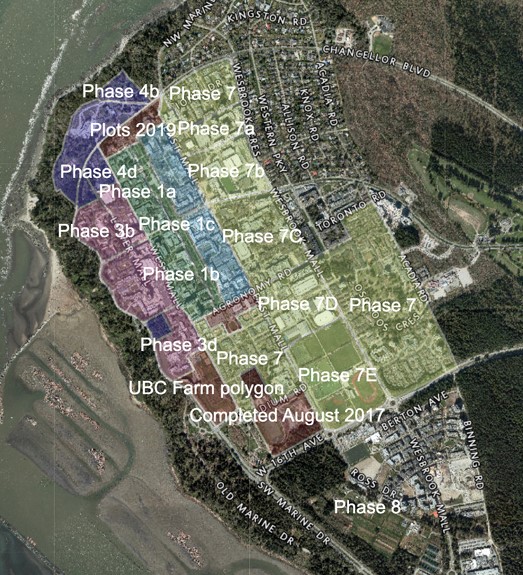
Steps to Conducting a Tree Inventory
There are three main parts to conducting a tree inventory.
1) Establishment: this step involves defining the spatial boundaries of the study, choosing the inventory type (dynamic vs. static; complete vs. partial), deciding on tools and measurement techniques, and subdividing the areas between student groups.
2) Measuring: this step involves taking measurements of different tree metrics, such as total tree height (TTH) and crown width (for a complete list of metrics measured, refer to Figure 2). The collected data is then cleaned and input into a single spreadsheet.
3) Analysis: using software such as iTreeEco, ecosystem services of measured trees can be estimated, which allows for students to conduct analyses such as value mapping.

The Purpose of Tree Inventories
The information and insights obtained from both the collected data and the subsequent analyses can be used in many different ways, such as informing conservation efforts by highlighting areas of particular interest.
Upon the completion of the inventory in 2025, the final deliverables can be used to inform biodiversity baselining on campus and ongoing monitoring efforts, while also aiding campus planners when they have to make important decisions about the design, composition, and sustainable management of green spaces
The Future of the Tree Inventory Project
Between April and August of 2023, a team of students will perform a systematic review of the tree inventory data to ensure the accuracy and usability of the data that has already been collected in the completed phases (1-5). This team will be led by senior Urban Forestry student ,Finn Köpf, and will focus on correcting errors and gaps in data.
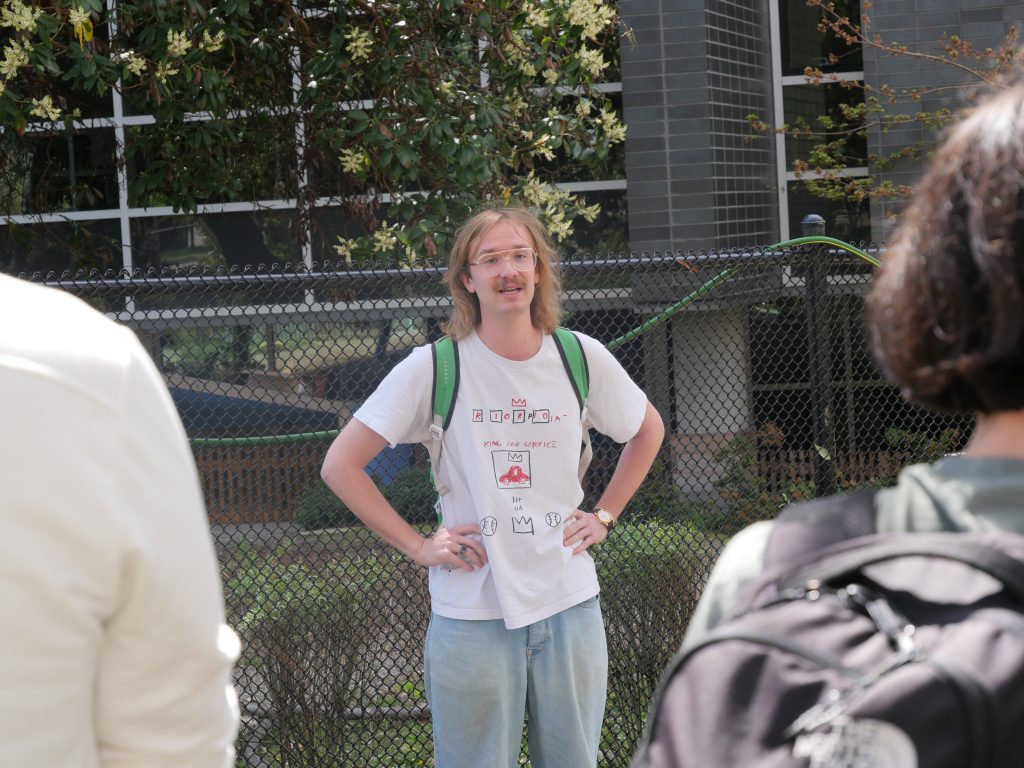
Work to better understand biodiversity on campus has never been more important. In ever-changing conditions, biodiversity on campus can help to maintain resilience in the face of climate change. To learn more about the tree inventory, explore the Tree Inventory Toolkit.
